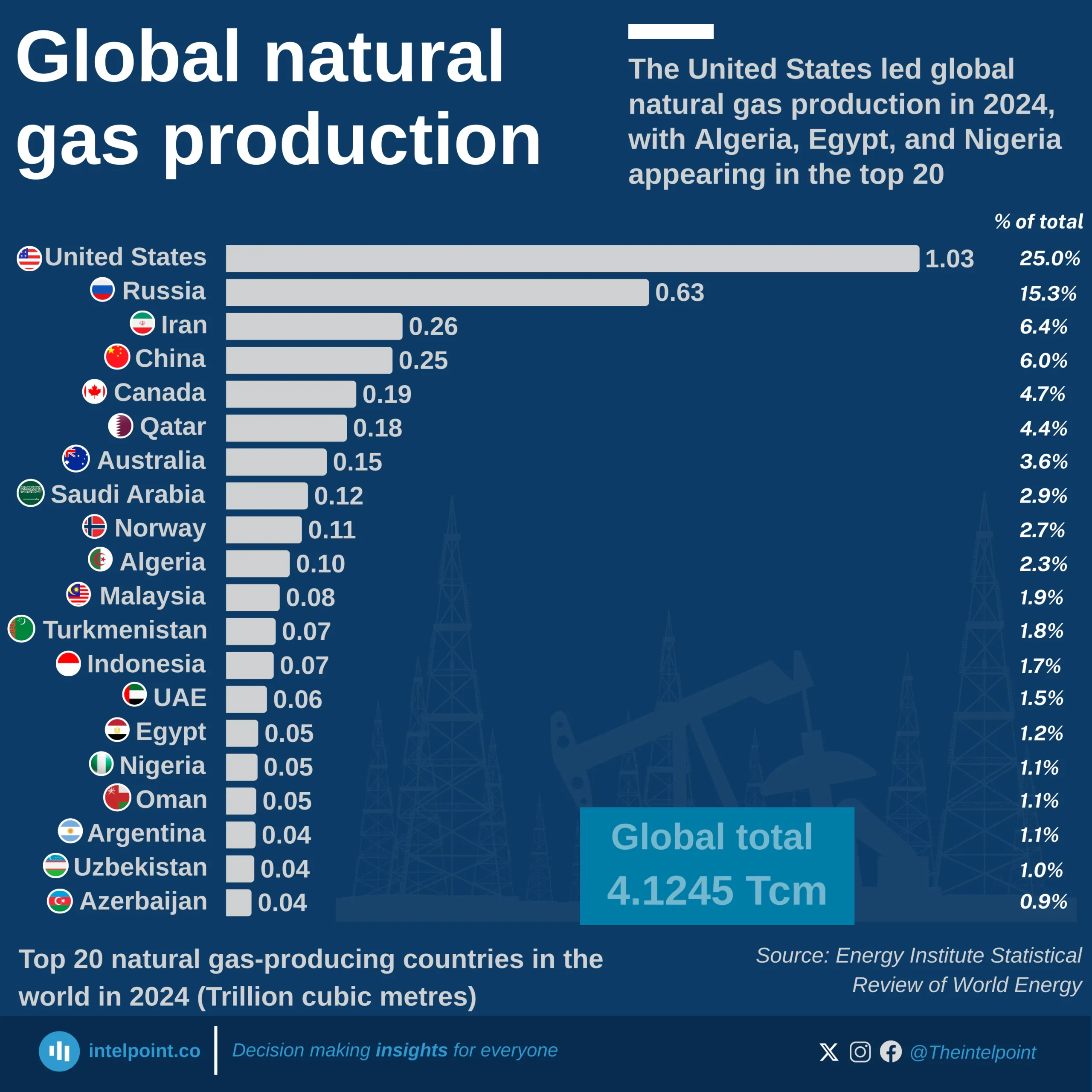The Dangote Refinery’s development has been a decade-long process, starting in 2013 with a $9 billion plan and evolving into a $20 billion+ project. Delays pushed completion far beyond the initial 2018 target, with the first crude supply arriving only in December 2023. The refinery began producing diesel and jet fuel in 2024, processing 6 million barrels, and is now expanding its trade network, importing 3 million barrels from the US while exporting jet fuel to Saudi Arabia and the US.

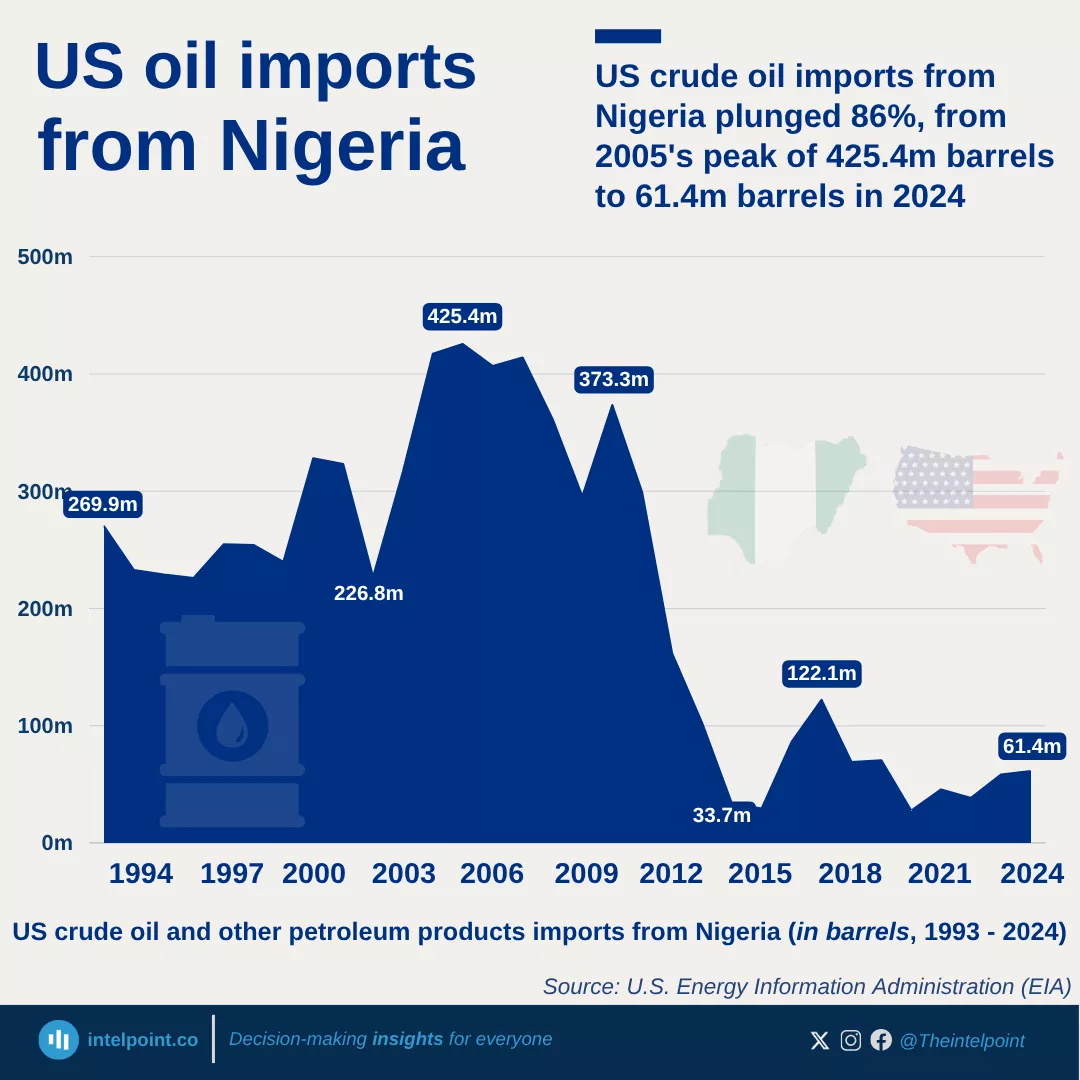
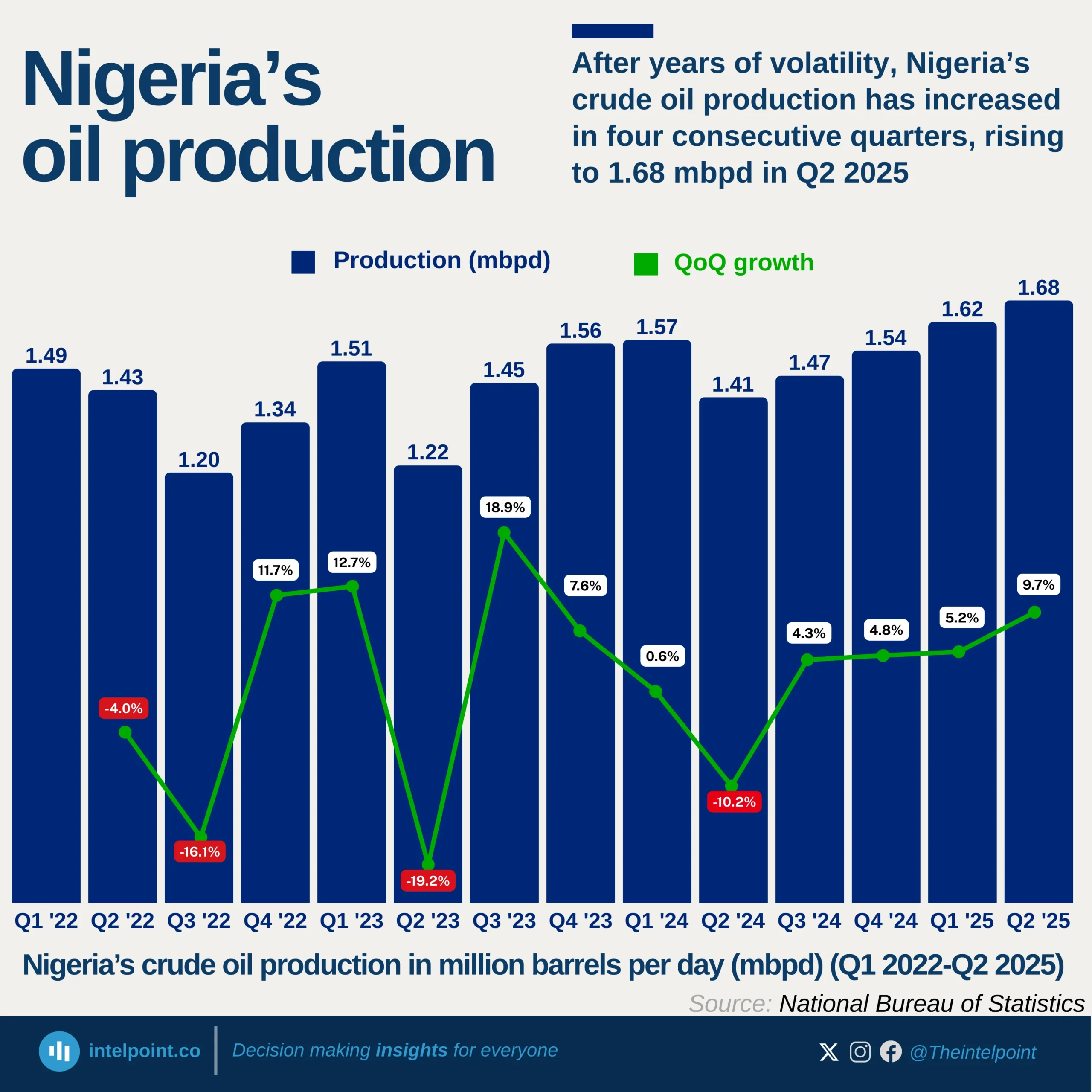
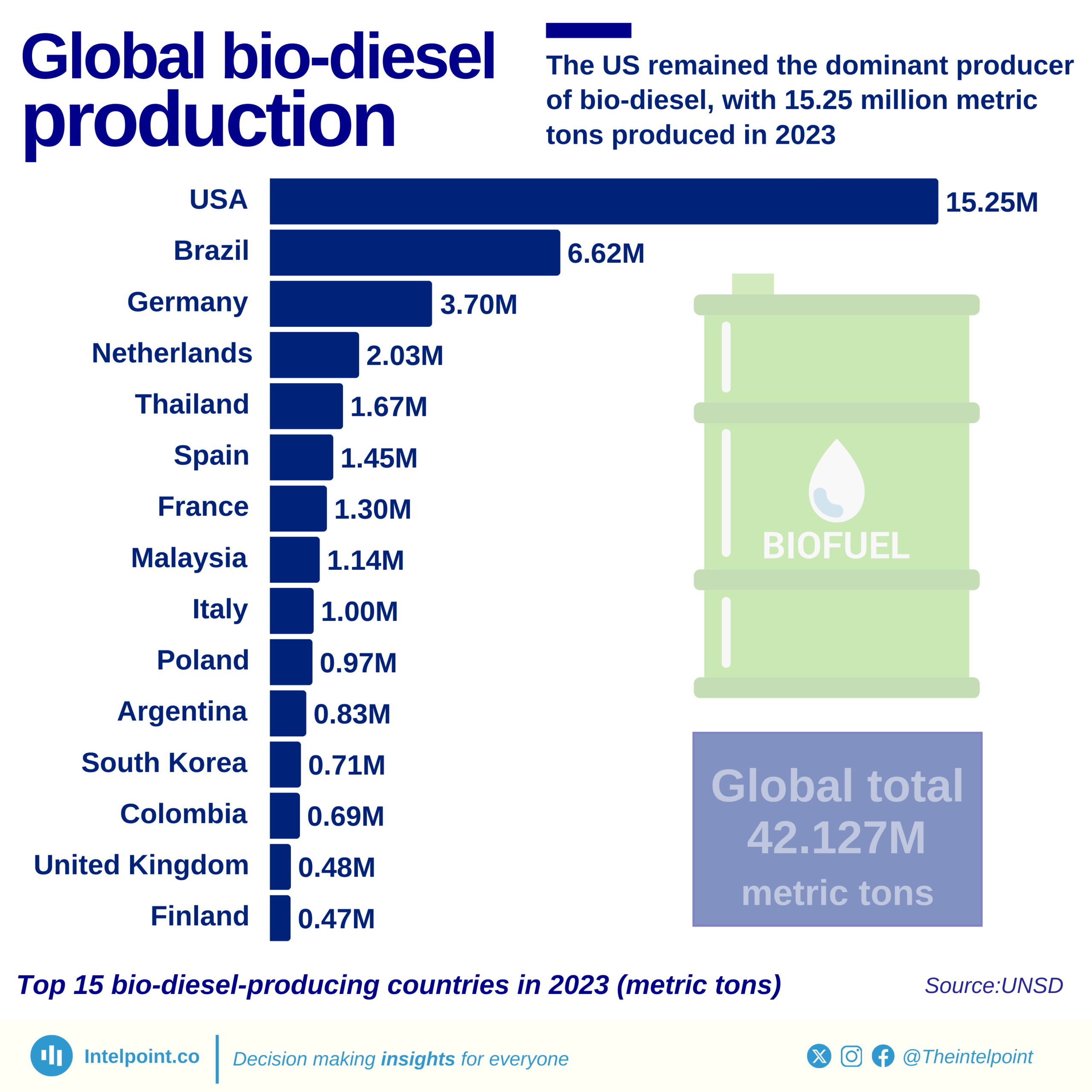
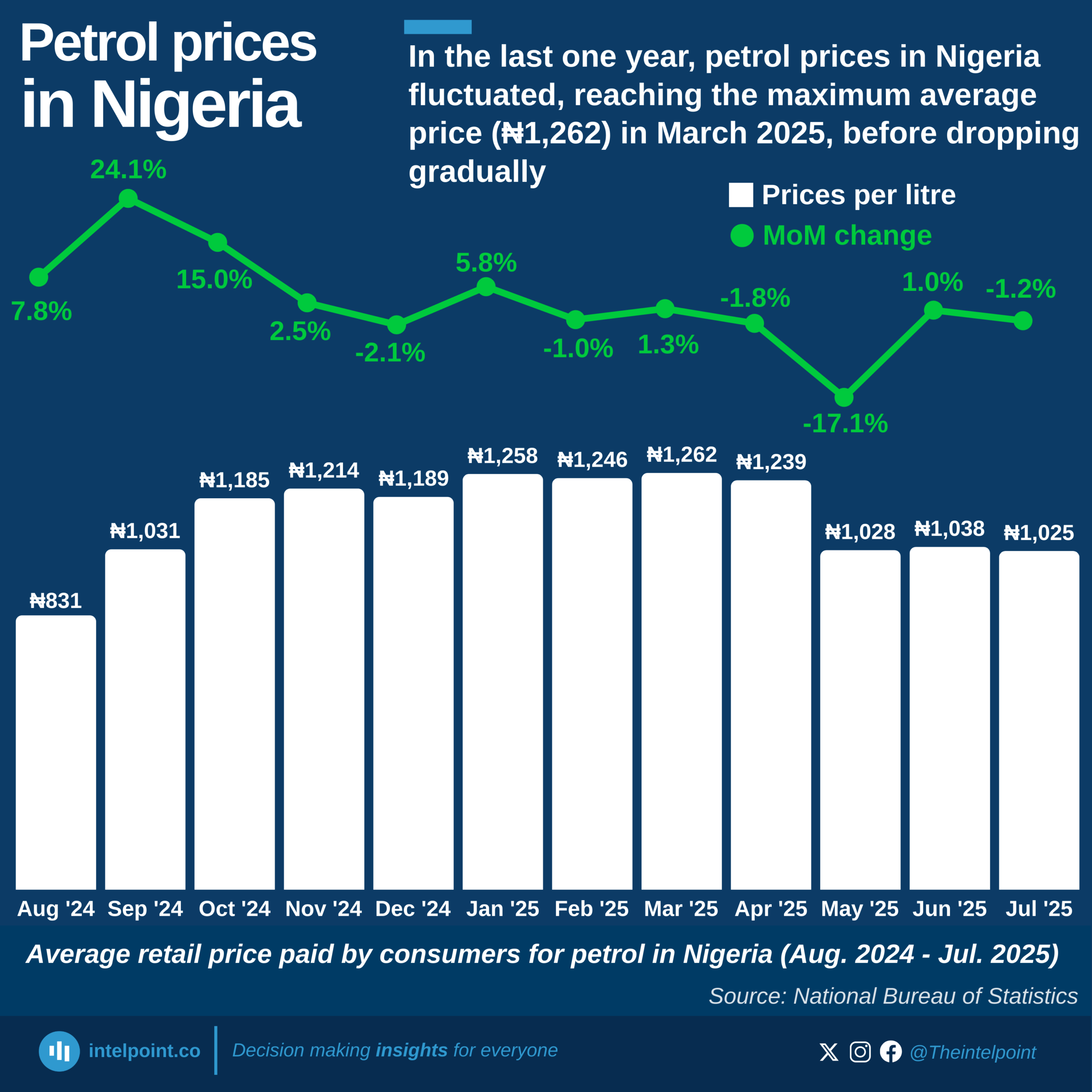
The United States dominates global natural gas production in 2024, contributing 1.03 trillion cubic metres (Tcm), nearly one-quarter of the world’s total.
Russia (0.63Tcm) and Iran (0.26Tcm) follow as the second and third largest producers.
China (0.25Tcm) and Canada (0.19Tcm) also feature strongly, rounding out the top five producers.
Collectively, these top five countries account for more than 50% of global production.
Emerging producers like Nigeria, Egypt, and Azerbaijan contribute significantly to the supply but remain far behind the leading nations.
